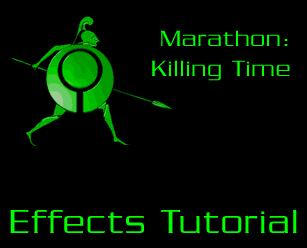
|
|||
|
 |
| Sliding Doors |
|
I'd like to start off by stressing a few important points in regards to this effect:
This is what the "unflattened" door should look like in Forge. A - Notice the extra vertices added to the front edges of the platforms. They are used to properly texture the walls. Ensure that they are 1 WU from the outer edge of the platform. Platforms 14, 23, 22, and 27 move at 200 WU/second, with a delay of zero. #14 is a door, controllable by players. The rest are silent platforms that are triggered by the next set of platforms. #14 is the only platform of these 4 that has the "Activates Adjacent Platform" tag set upon deactivation. They are ALL set to "Only (Activates) Once", "Can't Deactivate Externally", and "Secret". As a side-note, I'd like to point out that, although the sliding door in this tutorial doesn't make a sound, it is, indeed, a "door" that ought to. I'm not sure why it doesn't... Platforms 29-35 are set below the floor, and are invisible to the player. Their ceiling height is the same as the floor height of the room with the door, and their floor height is 1 WU lower. They send a triggering effect which causes the visible platforms to open. Each of them is set to "Activates Adjacent Platform" on deactivation. They are also set to "Only (Activates) Once", "Can't Deactivate Externally", and "Secret". They all have a speed of 2 WU/second, but the delay times vary. The even-numbered ones have no delay, the odd-numbered ones have a .5 second delay. This controls the speed of the visible doors.
There's a few things to note about the flattened door:
Let's go take a look at the unflattened sliding door... [Editors Note: At this point in the map tutorial you would teleport to the next level. - gls 11/13/2000] This is pretty much the exact same room as the last one, except that the sliding door is unflattened. I actually built this one first, but had to reverse the order for display purposes. You can examine it more closely here. I'd like to finish the sliding door effect portion of this tutorial by saying that it can be a serious pain in the arse. Getting it to work without the smearing really seems to depend on what "mood" Forge is in. I should actually clarify a point here - the "smearing" isn't actually the same smearing as seen when there's an untextured wall. A white wall shows up on a polygon edge. It can be walked through (usually), but seeing through it depends on the proximity and angle you view it at. The example I showed you is the best of several attempts I made to get it to work. I'm sure someone out there can fix this effect up to work with far fewer glitches. If that person is YOU, please, email me... |